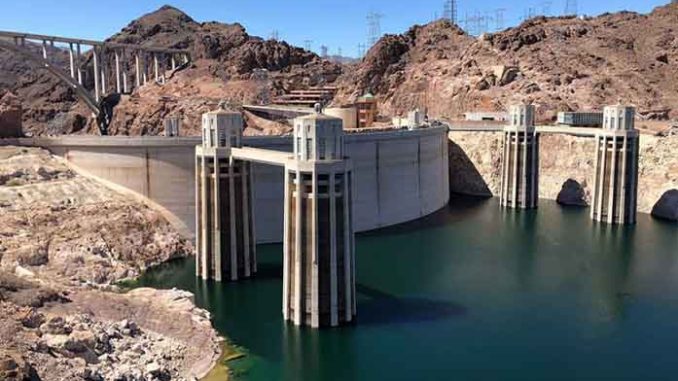
PHOENIX – Arizona Gov. Doug Ducey has written an opinion piece outlining some requirements he has for Arizona’s internal deal on drought. It came two days ahead of an important meeting of the board of the agency that runs the Central Arizona Project canal system.
The other six Colorado River Basin states and Mexico are waiting – mostly – on Arizona to finish its internal deal before they can sign a basin-wide Drought Contingency Plan meant to keep Lake Mead from falling to disastrously low levels.
Ducey’s op-ed, published Tuesday in the Arizona Capitol Times, criticized recent proposals to help various stakeholders deal with the cutbacks, what’s known as mitigation.
“In recent stakeholder meetings, demands for water and money to mitigate reductions are growing to insurmountable proportions – more than 1 million acre-feet of water and over $200 million through 2026 – creating an unsustainable precedent for mitigating water reductions in the future,” Ducey wrote.
The op-ed sends a signal about what the governor won’t accept. He said Arizona’s internal plan must reaffirm a goal of conservation, recognize that drought “may be the new normal” and not set expectations that cutbacks in Colorado River water will continue to be mitigated without end.
On Thursday, the board of the Central Arizona Water Conservation District, which runs the CAP canal system that delivers Colorado River water to the Phoenix and Tucson areas, will meet to discuss the Drought Contingency Plan. The agenda includes a proposal for mitigation.
This story is part of Elemental: Covering Sustainability, a multimedia collaboration between Cronkite News, Arizona PBS, KJZZ, KPCC, Rocky Mountain PBS and PBS SoCal.
